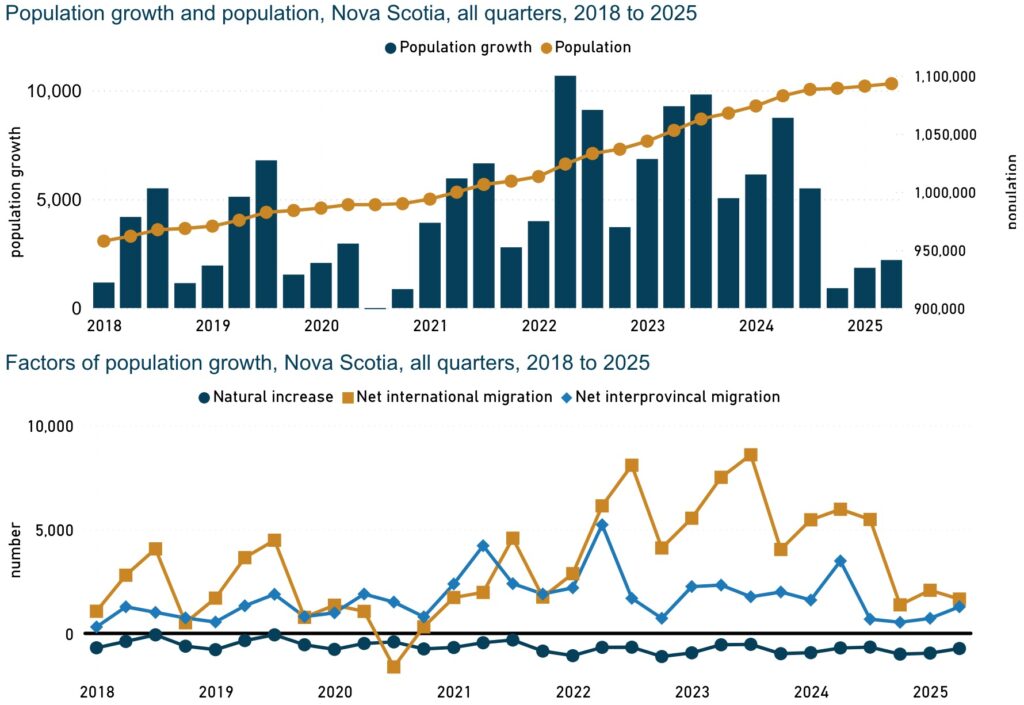Nova Scotia’s billion dollar deficit is reason for worry; rigorous spending discipline is needed

Posted September 26, 2025
Nova Scotia’s government has had an admirable four-year record of financial surpluses, the most recent being for the fiscal year ending on March 31, 2025.
The method has been budgets forecasting deficits but the final results being a surplus, primarily because of income exceeding projections.
On Tuesday finance minister John Lohr predicted a deficit exceeding $1.2 billion, $528 thousand worse than the fiscal 2025-2026 budget. Will they pull another rabbit out of the hat in the spring? It is a high barrier.
In the first two surplus years, income was supplemented by unscheduled federal contributions to deal with the Covid pandemic.
In addition, the province’s population grew rapidly, adding 100,000 Nova Scotians in the four years ending January 1, 2025. At 25,000 per year it would achieve Premier Houston’s goal of doubling the population by 2060.
The increase in 2024 was partly attributable to the Trudeau Liberals’ mismanagement of non-permanent residents, in particular the numbers of temporary foreign workers (TFW’s) and international students.
Historically the number of TFWs grew slowly, if at all, with many of them coming and going seasonally in the agricultural sector and new arrivals in other areas being mostly offset by departures. The Liberals relaxed the rules and numbers soared, adding to challenges in housing availability.
Canadian universities, with the strong encouragement of the federal government and provincial governments, have enjoyed great success attracting international students to our universities. Those students pay a tuition premium. The extra tuition they pay helps the universities to reduce tuitions for Canadian students.
In 2025 government policies applied a ceiling on the recruitment of international students. That and delays in visa processing have badly tarnished Canada’s ‘brand’ among international students. Those students have choices, and Canada and its universities are no longer a top education destination.
Meanwhile, the number of residents in Nova Scotia has grown by 10,476 in the twelve months ending July 1,2025.
During the same period, 6,000 new homes were started, which would typically provide housing for about 15,000 people.
The province has helped by supporting more seniors’ housing and student housing at universities and NSCC campuses.
The improved availability of housing choice is reflected in rental housing vacancy rates. Two years ago vacancy rates in Halifax were less than 1%. Today they exceed 3%. Some of the change is attributed to the reduction in international students.
It doesn’t help everyone. Vacancy rates are under 1% for rentals priced below $1,400 a month.
But overall, today’s pace of construction in Nova Scotia can house population growth of 15,000 people per year.
More could be possible. The excesses of condo building in Toronto and Vancouver may reduce pressure on prices for materials and labour.
This week the Houston government congratulated itself for the progress that it has made on various initiatives to speed up construction.
The biggest impact comes from zoning changes on land. That is useful, though no guarantee that something will be built. Filling up those spaces will support continuing population growth but will have little benefit to the finances in the current year.
The four years of “surprise” surpluses happened because the budget assumptions were based on cautious assumptions, leaving lots of room for upside outcomes. Among the benefits, the amount of accumulated deficit from prior years was reduced by more than a billion dollars.
But borrowing for capital projects, especially hospitals, has grown rapidly. Net debt has grown from $17.74 to $20.84 billion in the last two years.
Net debt per capita in 2023 was $17,306, little changed from 2021. It has risen to $19,364 in 2025.
It is a safe bet that the four-year streak of surpluses will be broken. The current year will end with a substantial deficit. Going forward, the interest on debt will increase at a greater rate than tax income.
The Houston government has been busy spending on popular choices: housing for students, seniors, and people living rough; more doctors, nurses, clinics, hospitals; more road repairs and improvements; and lowering taxes.
Greater discipline is required.
Most important is to maximize population growth, both international and interprovincial. The pace of home building will be able to keep up.

